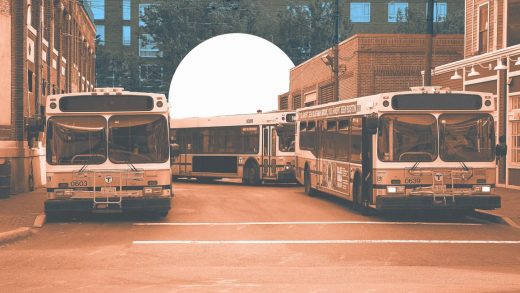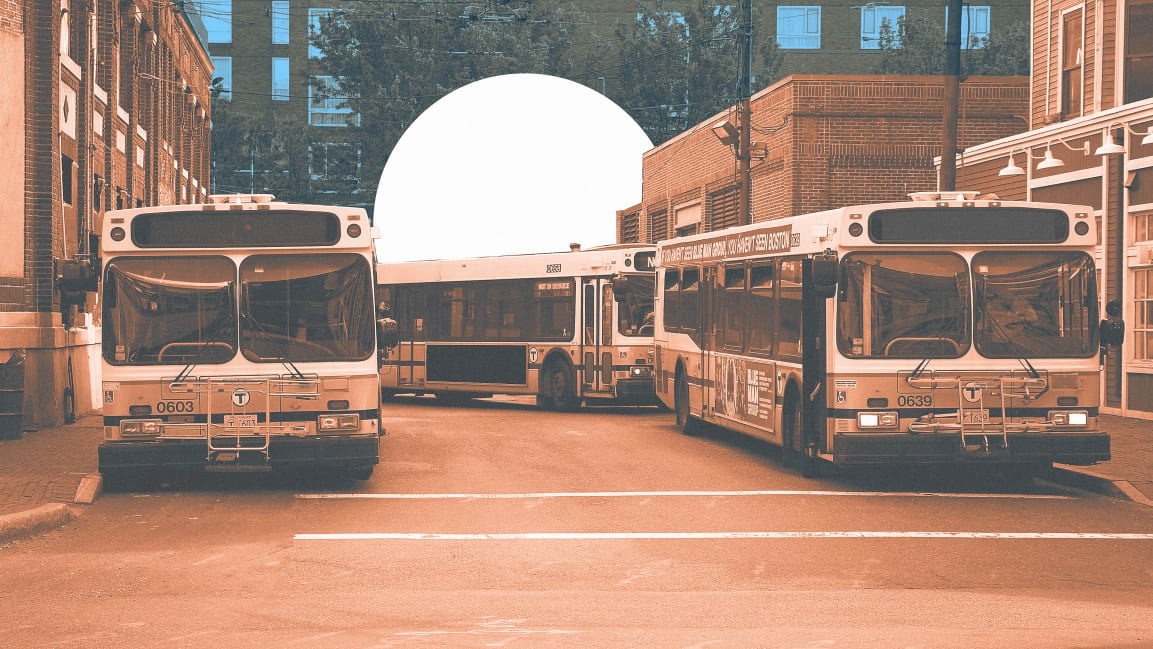Boston wants to make three bus lines free. Here’s how that’s worked out in other cities
On her first full day as mayor of Boston, the newly sworn-in Michelle Wu asked the Boston City Council for $8 million in order to make three city bus lines free for two years. The idea of fare-free public transit may sound surprising, particularly for those who’ve noticed fares steadily ticking upward as transit lines struggle with their annual operational budgets (a trend that has only worsened during the pandemic, which decimated ridership in many cities).
But free public transit is being tried in more and more cities globally—as well as in the U.S. About 100 cities around the world, mostly in Europe, have some free-fare policy, and more cities have been testing out the concept. (Wu’s proposal builds on a pilot put in place by her predecessor, Kim Janey, in which one major bus line was fare free for four months.) The idea behind most of these policies is to increase ridership and get people out of cars—critical for cities hoping to decrease traffic congestion and lower emissions. How have they worked in the past?
In 2013, Tallinn, the capital of Estonia, made all of its public transportation free for its roughly 430,000 residents (to be exempt from fares, they had to have been registered as a resident, meaning paying taxes in the city). A year later, a study found that public transport usage increased by 14%, but the share of car uses dropped only 5%, and the distance of the average car ride was 31% longer. Research suggested that people weren’t exactly swapping their car trips for train or trolley rides, but instead opting to walk less—the share of walking trips dropped 40%.
Tallinn continued, though, and still offers free transit to this day with some improvements: In 2019, a survey found 44% of residents mainly use public transit to get around (up from 40% the year prior), and 38% mainly use cars (down from 46% in 2018). Other cities have followed Tallinn’s lead, in various forms. Chengdu, China, launched fare-free public transport on certain bus lines and during morning hours (though that didn’t seem to entice people to start their trips earlier, and some passengers that used free buses ultimately would transfer to paid buses.) What did make an impact, though, was combining free fares with traffic restrictions based on license plate numbers, which led to passengers from 70% of restricted vehicles switching to free buses.
Some cities have tested free transit for people under a certain age—in Paris, those younger than 18 years old ride for free. That began in September 2020, timed to when kids returned to school, and is seen as a step for Paris to eventually offer a free transit network, The city launched a study in 2018 to explore going fare-free, and in a 2019 report declared that free transit was “not the only alpha and omega of mobility policy.” Kansas City, Missouri, is also rolling out free transit, but incrementally, focusing on students, veterans, and one fixed bus route to start. Others have gone all-in: Beginning in March 2020, Luxembourg made all public transit free, among one of the first such moves from an entire country.
It’s difficult to make broad claims about how successful these moves are, because each transit agency’s success depends on its own circumstances, including how many riders they had before going fare free or how affordable the fares were to begin with, how well-designed and far-reaching the system is (Estonia’s National Audit Office found that Tallinn’s bus network didn’t meet people’s mobility needs), and how much of that agency’s budget comes from fares (in Luxembourg, fares only covered 10% of operating costs).
Also, there are varying definitions of success. A 2012 National Academies Press book noted that early fare-free pilots, like one in Denver in the 1970s and in Austin in the 1990s, left people with a “negative interpretation” of the policy because of side effects like overcrowded buses and less schedule reliability. Plus, the percentage of new transit trips made from people changing from private vehicles was “not as large as agencies might have hoped for.” What these kinds of pilot programs did manage, however, was to increase ridership among the population who didn’t own a car. One report on a fare-free program in Asheville, North Carolina, noted that “there is a pent-up demand for mobility, particularly among low-income and younger people.”
That aspect of free public transit—reaching low-income residents who may have struggled to get around their cities—has been the motivation for many newer pilots, including the one enacted in Boston by the previous mayor. “Think about who is using our buses: It’s Black people, folks who live in communities where there are deep, deep concentrations of poverty,” Janey told the New York Times in 2020, when she was president of Boston’s City Council.
That same aspect may be a part of what motivated Wu to expand the network of free-fare buses. On the lines she proposed, more than 59% of riders were low income and more than 96% were people of color, according to a 2019 report. In a study evaluating the first free bus pilot, passenger fare-savings were estimated at $1.01 million annually, “concentrated among Boston’s lowest-income households.” There were social benefits, too, like reducing loneliness and depression due to an increased connection among Boston seniors, the disabled, and lower-income families. (The pilot also eliminated nearly 2,800 daily car rides.) To put that $1.01 million in context, the MBTA, which is responsible for public transportation in Greater Boston, forecasted collecting $200 million in fare revenue in fiscal year 2022, the same year it approved a $2.35 billion preliminary budget.
To Mayor Wu, free public transit may help reduce car use—though there are other tools cities can use in conjunction, such as congestion pricing or low-emissions zones. That it addresses equity may be even more significant, especially as the city works to recover from the economic impacts of COVID-19. “Eliminating fare collection on bus routes would speed up service, close racial disparities in transit access, serve our climate goals, and advance economic justice,” Wu said in a statement last summer. “In this critical moment of economic, social, and emotional recovery, we must take every step to strengthen racial equity, eliminate barriers to opportunity, and invest in accessible, equitable, reliable service in every community.”
Fast Company , Read Full Story
(33)



